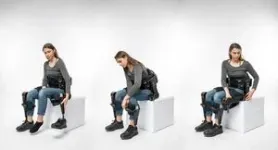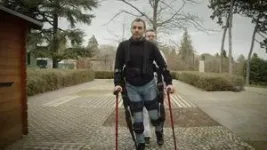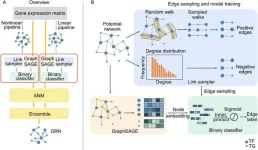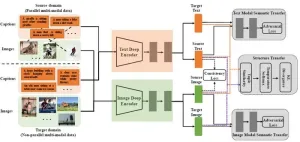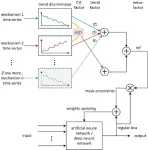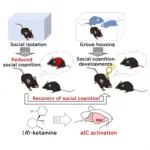(Press-News.org)
Milan (Italy), 23 February 2024 – TWIN is the name of the new robotic exoskeleton for lower limbs, designed and developed by Rehab Technologies IIT – INAIL, the joint laboratory between the Istituto Italiano di Tecnologia (IIT-Italian Institute of Technology) and the Prosthetic Center of INAIL (the prosthetic unit of the National Institute for Insurance against Accidents at Work), which will allow patients to wear it more easily. Presented today in Milan during a press conference held at the Museum of Science and Technology, TWIN was demonstrated by two patients who were involved in testing the system during its development. TWIN is currently a prototype, but researchers hope to bring it to industrialization soon.
The exoskeleton TWIN originates from the IIT’s Rehab Technologies Lab, which is the joint laboratory between the IIT in Genoa and the Prosthetic Center of INAIL in Budrio (Bologna), coordinated by Matteo Laffranchi. The collaboration began at the end of 2013 with the goal of developing innovative, high-tech, cost-effective solutions for patients with physical impairments.
One of the patients who wore TWIN today is Alex Santucci, who accompanied technicians and researchers throughout the entire design period of the device, participating in clinical experimentations as a tester. The clinical experiments took place not only at the Prosthetic Center of INAIL in Vigorso di Budrio but also at the Montecatone Rehabilitation Institute in Imola and at Villa Beretta in Costa Masnaga (LC).
The motorized exoskeleton TWIN is an external structure capable of enhancing the physical abilities of the wearer. It has been designed to allow individuals with reduced or even absent motor abilities in the lower limbs, such as in cases of complete spinal cord injuries, to maintain an upright position, walk with the assistance of crutches or walkers (as the exoskeleton is not self-balancing), and to stand up and sit down.
Two features make TWIN unique in the world: it is made of lightweight materials, such as aluminum alloy, and it is composed of modular components, facilitating usability and transportation. Furthermore, the structure is adjustable based on the patient's physical characteristics through telescopic links placed at the level of the femur and tibia. Ankles and foot support are available in various sizes to adapt to the ergonomics of the user, whether female or male, young or adult. TWIN's operating modes are also adaptable to the patient, evaluating the degree of motor deficit of the person wearing it, particularly their ability to perform autonomous walking.
TWIN can be controlled by an operator, such as a physiotherapist, using a specific Android application installed on the provided tablet. The graphical interface allows for controlling the exoskeleton in the execution of various programmed activities, setting the kinematic parameters of movement, and choosing between different step execution modes.
The exoskeleton works in three operating modes: 'Walk mode', designed for patients with absent motor function, in which the exoskeleton imposes a walking pattern according to programmed parameters; 'Retrain mode', used for patients with partial impairment of lower limb motor function, capable of performing a more or less autonomous movement but with difficulty in some phases of the step - in this case, the exoskeleton supports the patient's movement with more or less intensity, directing them towards an optimal reference trajectory; 'TwinCare mode', designed for patients with partial and differentiated motor impairment between the two limbs, where one leg is healthy and can move autonomously, while the other requires assistance, more or less pronounced, in some phases of the step.
The TWIN motors activate the knee and hip joints, imposing a completely configurable movement pattern on the patient's limbs, in terms of step length and type, and walking speed. The battery has a lifespan of approximately four hours and requires an hour to recharge.
In addition to rehabilitation clinics during physiotherapy sessions, TWIN can be worn daily, even for just a few hours, as assuming the upright position brings significant benefits in terms of musculoskeletal, circulatory, psychological, and digestive system functionality for wheelchair users.
TWIN's next goal is CE marking, which will occur in partnership with an industrial partner, followed by the industrialization process. Once TWIN is on the market, it can be used by patients in need, reintegrating severely injured workers into social and work environments.
END
Lockdown drills, practiced to help prepare children for shooting incidents at school, make those who have been exposed to violence feel safer – a new study of thousands of students in the US indicates.
The finding, reported in a new peer-reviewed paper published in the Journal of School Violence, contradicts claims that the drills traumatize children, without making them feel safer.
Ensuring that students feel safe – and are safe – in schools is essential for them to learn and thrive, explains ...
t’s official. Getting the recommended 7-9 hours of sleep a night is currently out of reach for almost one-third of the population as Flinders University experts found 31% of adults had average sleep durations outside the recommended range.
The global study of thousands of adults published in Sleep Health found only 15% of people slept the recommended 7-9 hours for five or more nights per week – and among those who did achieve an average of 7-9 hours per night over the nine month monitoring period, about 40% ...
In recent news, there has been a case where a patient experienced pain due to a surgical procedure involving sutures, resulting in the unintended presence of gauze within the patient's body. Gauze is typically employed to control bleeding during medical interventions, aiding in hemostasis. However, when inadvertently left in the body, it can lead to inflammation and infection. Addressing this issue, recent research has been published by researchers focusing on a hemostatic agent derived from mussels and silkworm cocoons. This hemostatic agent has garnered attention in the academic community due to its efficacy in clotting blood and its safety within ...
A new research study led by A*STAR.Singapore Immunology Network (A*STAR.SIgN) has found that neutrophils—one of the most abundant white blood cells in our body—change drastically in certain cancers, adopting a new function whereby they promote tumour growth. By carefully studying neutrophils as soon as they enter the tumour, scientists from A*STAR.SIgN also uncovered ways to accurately differentiate tumour-promoting neutrophils from normal neutrophils present in the rest of the body. Neutrophils play important and irreplaceable roles in fighting infections, ...
Gene regulatory networks (GRNs) depict the regulatory mechanisms of genes within cellular systems as a network, offering vital insights for understanding cell processes and molecular interactions that determine cellular phenotypes. Transcriptional regulation, a prevalent type for regulating gene expression, involves the control of target genes (TGs) by transcription factors (TFs). One of the major challenges in inferring GRNs is to establish causal relationships, rather than just correlation, among the various components ...
Image-sentence retrieval task aims to search images for given sentences and retrieve sentences from image queries. The current retrieval methods are all supervised methods that require a large number of annotations for training. However, considering the labor cost, it is difficult to re-align large amounts of multimodal data in many applications (e.g., medical retrieval), which results in unsupervised multimodal data.
To solve the problem, a research team led by Yang YANG published their new research on 15 Feb 2024 in Frontiers of Computer Science co-published by Higher Education Press and ...
Deep learning modeling that incorporates physical knowledge is currently a hot topic, and a number of excellent techniques have emerged. The most well-known one is the physics-informed neural networks (PINNs). PINN integrates the residuals of the system’s governing partial differential equations (PDEs) and the initial value/boundary conditions into the loss function, thus the resulting model satisfies the constraints of the physical laws represented by the PDEs. However, PINN cannot work if equations among the key physical quantities of the system have not been established. To ...
Osaka, Japan – Well-being is important for everyone, especially when we feel lonely or isolated. Depression is a serious challenge for many people and finding an effective solution is key.
In a recent study published in Molecular Psychiatry, researchers from Osaka University used a mouse model of depression to reveal that one form of ketamine (a common anesthetic) in low doses can improve social impairments by restoring functioning in a specific brain region called the anterior insular cortex.
Ketamine is often used at low doses to treat depression, but its actions in the brain remain relatively unclear. Generally, ketamine refers to a mix of two different forms of ketamine: ...
The evolutionary success of the first large predators on land was driven by their need to improve as killers, researchers at the University of Bristol and the Open University suggest.
The forerunners of mammals ruled the Earth for about 60 million years, long before the origin of the first dinosaurs. They diversified as the top predators on land between 315–251 million years ago.
Researchers studied the jaw anatomy and body size of carnivorous synapsids, using these traits to reconstruct the likely feeding habits of these ancient predators and chart their ecological ...
AI holds the potential to revolutionize healthcare, but it also brings with it a significant challenge: bias. For instance, a dermatologist might use an AI-driven system to help identify suspicious moles. But what if the machine learning model was trained primarily on image data from lighter skin tones, and misses a common form of skin cancer on a darker-skinned patient?
This is a real-world problem. In 2021, researchers found that free image databases that could be used to train AI systems to diagnose skin cancer contain very few images ...

